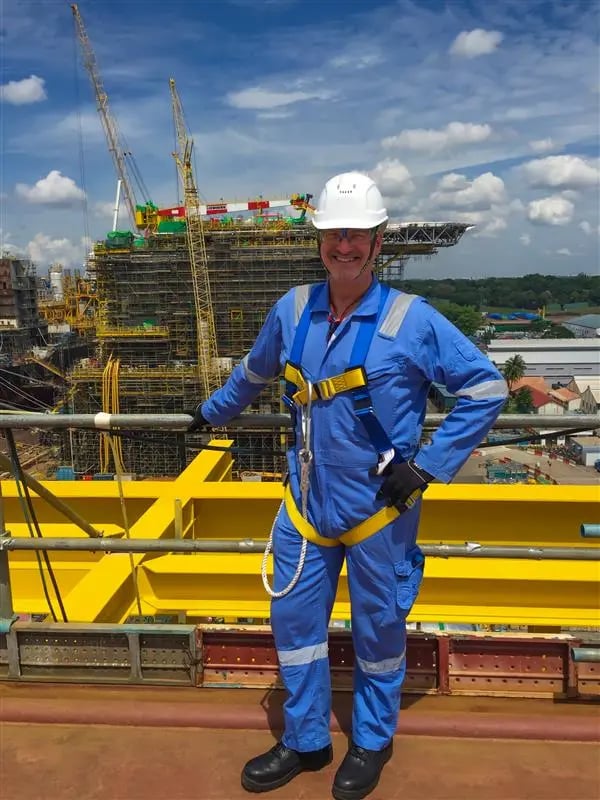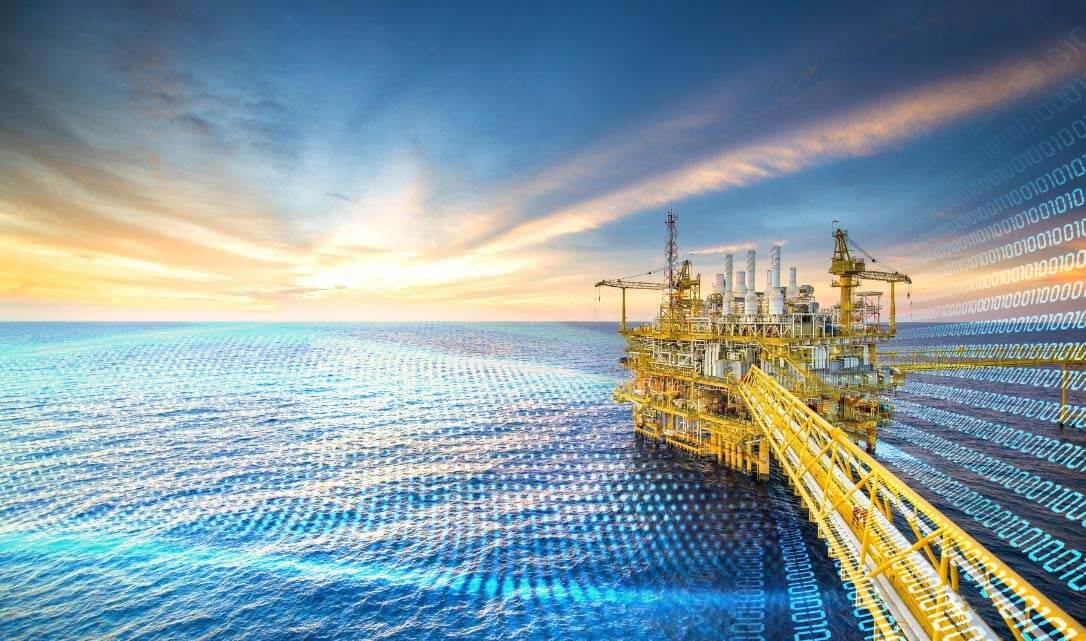Digital Completions in Plant Modifications and Upgrades
Unlike greenfield or any new build construction projects, plant modifications and upgrades present a unique set of challenges. Work is carried out...
5 min read
 Lisa De Vellis, PE
:
Mar 25, 2022 3:15:40 PM
Lisa De Vellis, PE
:
Mar 25, 2022 3:15:40 PM

Many industrial-sector concerns revolve around communication silos where information is stored and sometimes obscured from other teams working on the same project. Teams rely on their own versions of information locked away in their laptops, exposed to loss, data corruption and error. One team’s facts may be deemed erroneous, ignored or diminished by another team. Reality becomes a matter of perception or even half-truths.
In asset management, particularly in the overall and planning and execution of complex brownfield site development, factual ambiguity creates confusion, frustration, delays and mistakes, adversely impacting the bottom line. Brownfield projects are often the bane of many project and construction professionals for these very reasons.
Edward Johnson, Business Transformation and Project Management Consultant and leader in brownfield, greenfield and cross-country pipeline projects, advises the US-based GIS. An expert in operational

readiness, Ed champions digital transformation in pursuit of high-performing brownfield projects, transforming them from burdensome to exciting.
Going digital does not just eliminate paper, it integrates sources of data otherwise locked in local or network drives, captured in daily operator logs, sketched on the back of an envelope or deeply embedded in a corporate Enterprise Resource Planning program.
Further, digitization avoids duplication, automating routine processes and producing actionable intelligence from operations and projects that would otherwise be missed.
This transparent and accessible information helps avoid mistakes of the past. It also aligns stakeholders around a single point of truth, bringing teams and partners together. Firefighting becomes a thing of the past with digital technology, where everyone has access to real-time project status and all relevant information, anytime and from anywhere.
Asset management, construction planning and execution become complex when relying on numerous parties with oft competing interests, from the owner-operator to engineers, designers and supply-chain managers. From fabrication to transportation, installation to hookup, completions and commissioning to handovers, information constantly needs to be shared in a complete, accurate and efficient manner between parties.

Ed says,
“All of these different groups have to come together in any major capital project to deliver the promise made months or years before. Should something go wrong, which it often does in brownfield projects, fingers are pointed very quickly to other organizations. Engineering complains that operations’ information is out of date or missing. Construction complains that engineering designs are late but the construction schedule remains the same. Operations resist approval of work permits or access to operational resources because they don’t agree with the scope or the execution methodology. Who's to say what's the truth? Most of the time, it’s all the above.”
Uncovering project information and integrating data sources with specialized software solutions grant transparency to stakeholders. Instead of delays or doubt concerning the source or validity data, a digital system is a one-stop shop for truth.
“When you have that transparency of data and progress tracking,” says Ed, “you can see it in real-time, and no time or effort is wasted on drama.”

Digital solutions eviscerate defensiveness and finger-pointing, integrating project information into a manageable frame and bringing teams together in pursuit of a shared goal of project excellence.

With digital solutions in place, Ed says,
“You can quickly see when part of the design has not matured for whatever reason. The beauty is that [through software] we can see it early enough so that we can re-sequence our activities. We can change the order of item procurement, or we can change the order of actual fabrication in the yard.”
During construction execution, things such as materials management, work packs and progress tracking are often paper-based or otherwise obscured from cross-functional uses. This makes it easy for signals to cross, for information to get muddled and to spend an inordinate amount of time firefighting.

Ed recalls all too well the battles fought with traditional, non-digital methods.
“It can be very stressful when you're getting called at night or on the weekends, whether it be the clients, ‘Hey, why are you behind schedule?’ or your sub-contractors saying: ‘I'm going to have to charge you more because I couldn't gain access to the workface’. Or people on your team saying, ‘I've had it with this project because I keep hurrying up to just stand around and wait’. All these things create a tremendous amount of stress, so being able to anticipate and avoid that is priceless.”
Modern engineering teams maintain good metrics and data to produce weekly reports. However, linking engineering from multiple sources as is usually the case in large-scale projects becomes more challenging with a variety of formats and frames of reference.
Fabrication performance, for example, is often difficult to incorporate into the overall plan. Fabrication, says Ed,
“is traditionally an opaque part of the business because the fabricators operate on very thin margins with little access to advanced data collection, analysis, and reporting. Paper-based systems rule in fabrication, making collection, reporting and analysis nearly impossible.”
The interface between engineering and fabrication is essential to smooth and quality-assured works.
“Most fabricators have a good idea of their progress and pinch points, but don’t always have accurate data in terms of how far along they are in receipt of raw material, assembly, testing or paint and, further, cannot easily convey that information to partners and customers.”
This glaring information gap handicaps fabrication efficiencies and impedes effective engineering communications. The link between materials management and effective project planning is undeniable.
“When it comes to construction, knowing exactly where you are relative to your plan, is critical,” says Ed.
With digital software solutions in place, essential questions are easily answered and those answers are easily accessible: How many cubic meters or feet of concrete have been poured? How far along are pipe supports and how many linear feet of pipe have been installed? Has all material arrived on site, complete and ready to install?
When information is digitized, sophisticated software alerts to potential problems or bottlenecks in advance.
“Bad news shared early is actually a good thing,” says Ed, “because then you have time to fix it.”

The ability to anticipate problems or delays without finger pointing unifies all those involved in various aspects of the project. The common interest of performing work to a high-quality standard, on time and on-or-under budget supersedes the reactive approach demanded of paper-based and siloed processes.
Ed says that project teams spend inordinate amounts of time revolving around delayed schedules or increasing costs. As the unified intention is to reduce or eliminate both issues, a reliance on delayed or suspect information tends to result in unpleasant surprises and failure to stay ahead of the game. This is why many professionals try to steer clear of brownfield projects where external influences, missing or suspect data and lack of operational context creates enormous challenges.
When integrated digital information replaces paper and data silos, says Ed, “transparency reduces that effect so that informed decisions may be made on time.” Digital solutions make everyone look good and enjoy the project.
Though the cost-and-time benefits are clear to those willing to adopt digital transformation, Ed admits that getting people to embrace technology, whether simple or complex, can be a huge challenge. Sticking to the old tried and true ways certainly has value but leaves money on the table compared to more efficient, digitally rich project execution.
But when the benefits are felt, when digital solutions make their jobs easier, “they will more likely get enjoyment out of it,” says Ed, “because they're going to experience more collaboration and deliver a better product at the end.”
While digital transformation begins with converting paper-based information to digital data and opening interfaces to diverse data sets, there is exciting scope for future innovation in industrial sectors. This includes machine learning, augmented reality and, most excitingly, digital twins, which are 3D models of the asset complete with significant static and often dynamic data available at the click of a mouse.
Digital twins increase transparency and establish a single source of truth, creating a virtual reality whereby all users see the same model and the same data. This allows for efficient collaboration in real time and on a real representation of the end product.

“It’s really important to have that transparency,” says Ed. “A digital twin of the facility uses the original design and all parameters of the instruments, elevations, side and top views, plot plans, integrated all together into one [digital] space.”
This creates a virtual reality that ensures seamless, ready access to data from a lot of different sources, all in one frame of reference so that it is visually clear and actionable.
This certainty provided by advanced software solutions is the next step up in the digital transformation journey. Advanced technologies such as digital twins are only possible when information is digitized, replacing paper and creating links between sources of data that do not currently exist. That is the first step. Only then, when paperless systems are fully embraced, can the more advanced tools such as digital twins come to the fore, pushing projects and entire sectors to the next level.
Unifying teams towards a common goal, implementing proactive rather than reactive strategy, and ensuring all information from various project phases conveys with complete transparency come from digital transformation.
Start your digital transformation journey with  for brownfield solutions.
for brownfield solutions.

Unlike greenfield or any new build construction projects, plant modifications and upgrades present a unique set of challenges. Work is carried out...

Turnarounds and shutdowns are among the most critical—and stressful—phases in the management and operation of industrial assets. These planned...

Offshore decommissioning and asset retirement present significant logistical, regulatory, safety, fiscal and reputational challenges. The process of...

This blog continues our five-part series on overcoming challenges in the oil and gas industry, which identified the following problems facing EPC...

The Global Pandemic has brought with it, death, devastating life changes and a myriad of workplace changes. The Energy industry did not escape the...

One of the most important planned events for any onshore or offshore facility is when production and operation are halted completely. This process,...